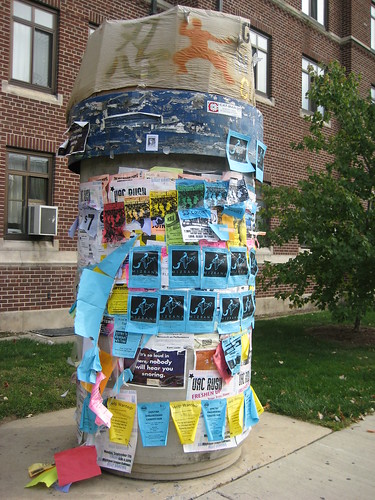Civic Data Challenge Invites Entrants to Turn Civic Health Data Into Useful Applications and Visualizations
From email:
For more information, check out the Civic Data Challenge webpage.
--------
It wouldn't be particularly scintillating in terms of data-based graphic interpretation, but four big issues for me in terms of so-called "civic health" are:
(1) presence of traditional (print, broadcast, etc.) community media in communities and the access that residents, citizens, and people with alternative perspectives have to these vehicles.
So in DC, I'd say that neighborhoods (Georgetown, Dupont Circle, Upper Northwest, etc.) are better served because they have access to--and in some neighborhoods it's delivered door-to-door--the Current Newspapers, which are published weekly. This is better compared to Greater Capitol Hill, because there the Hill Rag is published only once/month. But many neighborhoods lack this kind of vehicle.
In Mount Pleasant, they have a community radio station, Radio CPR. Technically, there is also cable access television, which people can use, but there is limited information about what it is, how to use it, and what's being broadcasted.
Also see the work by community media scholar Robert McChesney, who teaches at the University of Illinois.
By comparison, in city-wide media, citizens have a bit more access to the Washington Times, the free Washington Examiner, and the alternative weekly, the Washington City Paper, than they do to the Washington Post and the free daily Express. While the broadcast television stations mostly don't cover community news, just murders, accidents, and fires, and politicians. However, the NewsChannel 8 24-hour cable channel does provide a few more options for community involvement, as do the programs on the local public radio station, WAMU.
(2) Presence of community bulletin boards and kiosks, where people can independently post flyers and other information.

On the campus of the University of Michigan in Ann Arbor, so-called kiosks (an element of the underground steam heating system) are used by individuals and groups to post flyers and information. Flickr image by NYC Comets.
(3) Presence and relative health of civic organizations, at two or three scales: the neighborhood and community-wide scale (e.g., the differences between what the Capitol Hill Restoration Society, a neighborhood group addresses and the DC Preservation League, which is a city-wide organization), along with the political district level (ward, councilmanic district, borough, etc.). For example, the London Cycling Campaign and the Toronto Cyclists Union support organizing at the ward-borough level.
(4) Measures for substantive citizen connection to local government decision-making, such as the existence of Community Boards in New York City, Neighborhood Planning Unit organizations in Atlanta, the designated community planning groups in San Diego, the Neighborhood Councils in Los Angeles or Seattle, DC's Advisory Neighborhood Commissions, etc. AND measures of substantive access and input that these organizations have.
Labels: cartography, change-innovation-transformation, civic engagement, data and analysis, participatory democracy and empowered participation, visualization



1 Comments:
this blog is more information are provide.
Post a Comment
<< Home